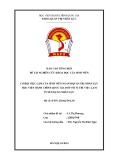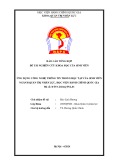
MINISTRY OF EDUCATION AND TRAINING
DONG THAP UNIVERSITY
B.A THESIS
A COMPARATIVE STUDY ON
INVITATIONS IN ENGLISH AND VIETNAMESE IN
TERMS OF CROSS - CULTURAL PERSPECTIVE
(SUMMITED IN PARTIAL FULFILLMENT FOR THE REQUIREMENTS
OF THE B.A DEGREE)
NGUYEN VAN TRONG
DONG THAP - 2012

MINISTRY OF EDUCATION AND TRAINING
DONG THAP UNIVERSITY
B.A THESIS
A COMPARATIVE STUDY ON
INVITATIONS IN ENGLISH AND VIETNAMESE IN
TERMS OF CROSS - CULTURAL PERSPECTIVE
(SUMMITED IN PARTIAL FULFILLMENT FOR THE REQUIREMENTS
OF THE B.A DEGREE)
NGUYEN VAN TRONG
SUPERVISOR: HUYNH CAM THAO TRANG, M.A
DONG THAP - 2012

i
ii
DECLARATION
I, hereby, declare that my thesis entitled: "A Comparative Study on Invitations in
English and Vietnamese In Terms of Cross - Cultural Perspective" is the result
of my own work, submitted in the fulfillment for the requirements of the B.A degree.
Except where the reference is indicated, no other person’s work has been used
without due acknowledgment in the text of the thesis.
Cao Lanh City - April, 2012
Nguyen Van Trong

ii
ii
TABLE OF CONTENTS
DECLARATION ............................................................................................i
TABLE OF CONTENTS ........................................................................................ii
ACKNOWLEDGMENTS ...................................................................................... v
ABSTRACT .......................................................................................................... vi
LIST OF TABLES ................................................................................................. vii
LIST OF FIGURES ............................................................................................... vii
LIST OF ABBREVIATIONS AND NOTIFICATION CONVENTIONS .............. viii
CHAPTER ONE: INTRODUCTIONS .............................................................. 1
1.1. Motivation for the study ............................................................................. 1
1.2. Aims of the study ........................................................................................ 3
1.3. Research methods ....................................................................................... 3
1.4. Scope of the study ...................................................................................... 4
1.5. Significance of the study............................................................................. 4
1.6. Previous related studies .............................................................................. 5
1.7. Organization of the study ............................................................................ 5
CHAPTER TWO: LITERATURE REVIEW ....................................................... 7
2. 1. Politeness strategies ................................................................................... 7
2.2. Generalization of speech acts .................................................................... 11
2.2.1. Definitions of speech acts ............................................................... 11
2.2.2. Classification of speech acts ........................................................... 13
2.3. Invitations as speech acts .......................................................................... 15
2.4. Pragmatics and cross-cultural pragmatics ................................................. 16
2.5. Categories of inviting in English and Vietnamese ..................................... 18
2.5.1. Categories of inviting in English ..................................................... 19
2.5.1.1. Direct invitations in English ................................................. 19
2.5.1.2. Indirect invitations in English ............................................... 21

iii
ii
2.5.2. Categories of inviting in Vietnamese .............................................. 22
2.5.2.1. Direct invitations in Vietnamese ........................................... 22
2.5.2.2. Indirect invitations in Vietnmaese ........................................ 24
CHAPTER THREE: METHODOLOGY ........................................................... 27
3.1. Research questions ................................................................................... 27
3.2. Research participants ................................................................................ 27
3.3. Research procedure................................................................................... 29
3.4. Data collection instruments ....................................................................... 29
3.4.1. The survey questionnaires............................................................... 29
3.4.2. Personal observations ..................................................................... 32
3.5. Data analysis method ................................................................................ 32
CHAPTER FOUR: RESULTS AND DISCUSSION ........................................... 33
4. 1. An overview of results ............................................................................. 34
4.1.1. An overview of results in equal power settings ............................... 34
4.1.2. An overview of results high power settings ..................................... 35
4.1.3. An overview of results low power settings ...................................... 36
4.2. Results of data analysis ............................................................................. 37
4.2.1. The choice of inviting forms in equal power settings ...................... 38
4.2.2. The choice of inviting forms in high power settings ........................ 41
4.2.3. The choice of inviting forms in low power settings ......................... 45
4.3. Discussion ................................................................................................ 48
4.3.1. Research question 1
4.3.1.1. Similarities ........................................................................... 49
4.3.3.2. Differences ........................................................................... 50
4.3.2. Research question 2



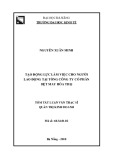
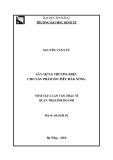

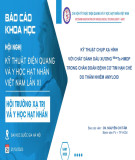
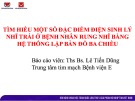
![Hình ảnh học bệnh não mạch máu nhỏ: Báo cáo [Năm]](https://cdn.tailieu.vn/images/document/thumbnail/2024/20240705/sanhobien01/135x160/1985290001.jpg)
